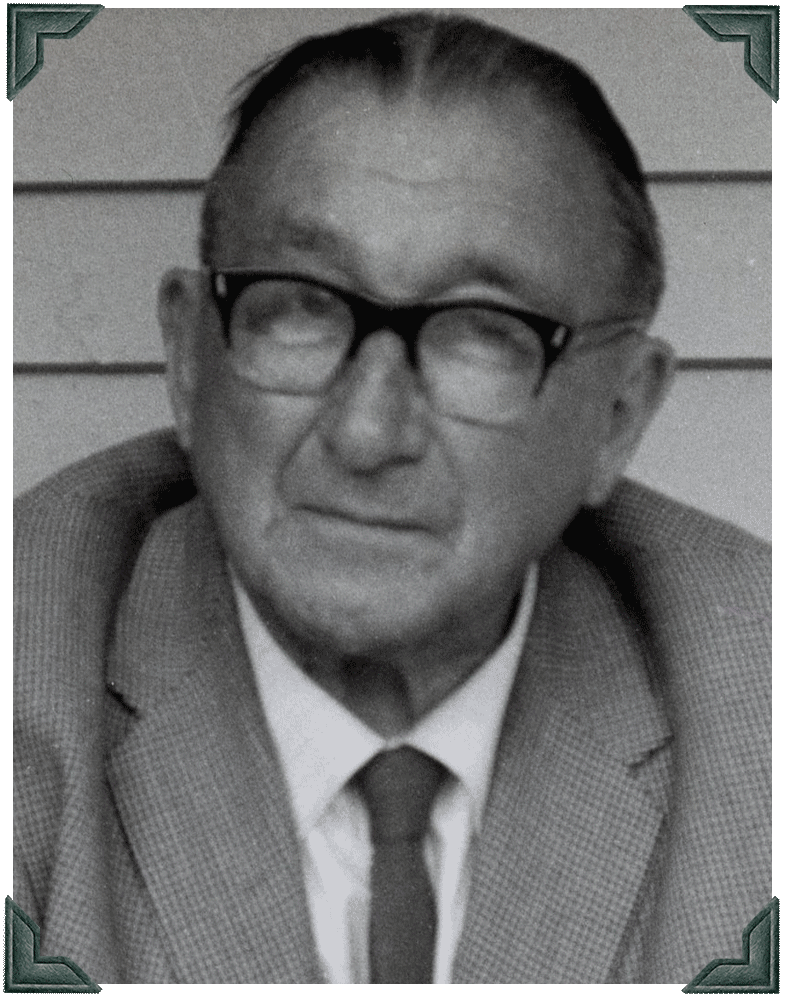Name: George “Eric” Frederick Vernon Anson
Qualifications:
BA (Hons) – Cambridge University (1913)
MRCS LRCP – Cambridge University (1916)
DA and RCP&S (1935)
Masters – Cambridge University (1968)
Date of Birth: 22 November 1892
Date of Death: 6 June 1969
George “Eric” Anson is a significant anaesthetist who raised the profile of the specialty in New Zealand. Anson received his qualifications in England, working at the Children’s and General Hospitals in Birmingham post-World War I. He returned to New Zealand in 1922 where he worked in Wellington until World War II. After serving in both World Wars, Anson worked the rest of his career in New Zealand. He was an integral member of the New Zealand Society of Anaesthetists serving in various roles including president. In 1952 his contributions were recognised as he was elected a Fellow of the Faculty of Anaesthetists, Royal Australasian College of Surgeons.
Can you add any details to this biography?
If so, complete the Contributor Form.
George “Eric” Frederick Vernon Anson was born on 22 November, 1892 in Wellington, New Zealand.[i] He attended Wanganui Collegiate School in Whanganui, New Zealand.[ii] In 1913, he moved to England to study at Cambridge University, residing in Trinity College.[iii] During 1912, Anson was a demonstrator in anatomy and anaesthesia at St Thomas Hospital, London.[iv]
Post-university, Anson joined the Royal Naval Reserve in Britain, serving as a temporary surgeon and lieutenant commanding the HMS Thames.[v] In 1917, he was recognized internationally for his work into motor torpedo boats.[vi] Although returning briefly to New Zealand after the war, Anson soon found himself again in England, working as a resident anaesthetist in Birmingham. After 18 months in private practice, Anson returned to the Children’s and General Hospitals in Birmingham as the first Senior and Assistant Anaesthetist respectively.[vii]
Anson returned to New Zealand in 1922 where he became a Visiting Anaesthetist to Wellington Hospital before World War II. [viii] During this period, Anson was an active member of the British Medical Association (BMA) in New Zealand.[ix] He served as Chairman of the Council from 1936 to 1937. With the outbreak of World War II in the Pacific, Anson joined the Royal New Zealand Army Medical Corps serving in the Middle East then on the hospital ship “Oranje”.[x]
For his contributions during the war, Anson was awarded an Order of the British Empire (OBE) when he retired from practice circa 1962.[xi]
Anson continued practicing as an anaesthetist in New Zealand after World War II. From 1945 until 1957, he was both the Director of Anaesthetics to public hospitals in Auckland and conducted his own private practice.[xii] He joined the New Zealand Society of Anaesthetists from its inception in 1948 and served as their first president.[xiii]
In 1949, Anson was elected a Fellow of the Faculty of Anaesthetics, Royal College of Surgeons. [xiv] He was also elected in 1952 to the Faculty of Anaesthetists, Royal Australasian College of Surgeons (RACS). [xv] In 1969, Anson was awarded the Orton Medal from the Faculty at RACS for his services to anaesthetics.[xvi]
Apart from his work in anaesthetics, Anson served as the Honorary Vice-President of the Wellington Kennel Club and was interested in cabinet-making and photography. His contributions to anaesthetics in New Zealand raised the profile of the specialty.
REFERENCES
[i] George Frederick Vernon Anson, ‘Faculty of Anaesthetists, Royal Australasian College of Surgeons’, Information Form, c.1951, Geoffrey Kaye Museum of Anaesthetic History: VKGM 6903.45, p. 1.[ii] Ibid.[iii] Basil Hutchinson, ‘Eric Anson: An Appreciation’, Auckland, 1983, p. 6, ANZCA Archives, Series 11.[iv] Anson, ‘Faculty of Anaesthetists, Royal Australasian College of Surgeons’, p. 2.[v] ‘Certificate for Wounds and Hurts’, 1917 in Hutchinson, ‘Eric Anson’, p. 31.[vi] ‘Coastal Motor Boats in the Great War’, The Meccano Magazine, 18, no. 6 (1933) in Hutchinson, ‘Eric Anson’, p. 32.[vii] Anson, ‘Faculty of Anaesthetists, Royal Australasian College of Surgeons’, p. 2.[viii] Ibid.[ix] New Zealand Medical Association, ‘NZMA History’, 2015, Online: https://www.nzma.org.nz/about-nzma/nzma-history.[x] Anson, ‘Faculty of Anaesthetists, Royal Australasian College of Surgeons’, p. 2; Government House New Zealand, ‘Copy of Official Citation’, Letter, 1946 in Hutchinson, ‘Eric Anson: An Appreciation’, p. 12.[xi] Ibid.[xii] Anson, ‘Faculty of Anaesthetists, Royal Australasian College of Surgeons’, p. 2.[xiii] Basil Hutchinson, ‘History of the NZSA’, 2015, Online: http://www.anaesthesiasociety.org.nz/about/history/history-of-the-new-zealand-society-of-anaesthetists/.[xiv] Anson, ‘Faculty of Anaesthetists, Royal Australasian College of Surgeons’, p. 2.[xv] Georg Frederick Vernon Anson, ‘Exordium’, Form, 1952, Geoffrey Kaye Museum of Anaesthetic History: VKGM 6903.44.[xvi] Australian and New Zealand College of Anaesthetists, ‘Robert Orton Medal’, 2015, Online: http://www.anzca.edu.au/about-anzca/our-awards/robert-orton-medal.html.IMAGES
- Basil Hutchinson, ‘Eric Anson: An Appreciation’, Auckland, 1983, p. 22, ANZCA Archives, Series 11.
- Basil Hutchinson, ‘Eric Anson: An Appreciation’, Auckland, 1983, p. 17, ANZCA Archives, Series 11.
- Basil Hutchinson, ‘Eric Anson: An Appreciation’, Auckland, 1983, p. 15, ANZCA Archives, Series 11.
- George Frederick Vernon Anson, ‘Exordium’, Application Form, 1952, Geoffrey Kaye Museum of Anaesthetic History: VKGM 6903.44.
- Basil Hutchinson, ‘Eric Anson: An Appreciation’, Auckland, 1983, p. 11, ANZCA Archives, Series 11.





